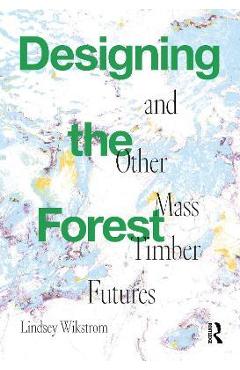Designing the Forest and Other Mass Timber Futures - Lindsey Wikstrom

Detalii Designing the Forest and Other
libris.ro
269.2 Lei
299.11 Lei
Architecture
Lindsey Wikstrom
Designing the Forest and Other - Disponibil la libris.ro
Pe YEO găsești Designing the Forest and Other de la Lindsey Wikstrom, în categoria Architecture.
Indiferent de nevoile tale, Designing the Forest and Other Mass Timber Futures - Lindsey Wikstrom din categoria Architecture îți poate aduce un echilibru perfect între calitate și preț, cu avantaje practice și moderne.
Preț: 269.2 Lei
Caracteristicile produsului Designing the Forest and Other
- Brand: Lindsey Wikstrom
- Categoria: Architecture
- Magazin: libris.ro
- Ultima actualizare: 05-06-2025 16:21:01
Comandă Designing the Forest and Other Online, Simplu și Rapid
Prin intermediul platformei YEO, poți comanda Designing the Forest and Other de la libris.ro rapid și în siguranță. Bucură-te de o experiență de cumpărături online optimizată și descoperă cele mai bune oferte actualizate constant.
Descriere magazin:
If we want to continue existing on this earth, an era of renewable energy and materials is urgently needed. What role could mass timber, with its potential to replace concrete and steel, have in ensuring the planet\'s survival? This book retraces wood\'s passage from stewarded seed in the soil of forests, to harvested biomass, to laminated walls in a living room, through to its disassembly, pausing at each step in the supply chain of mass timber to consider the labor and economies involved, looking closely at the way wood is grown, sourced, and transported, and its impacts on the biodiversity of the forest and the health of our ecosystems. It explores why historically entrenched contexts of extractivism make such sensitive approaches difficult to cultivate across landscapes and industrial frameworks. Along the way, common assumptions about mass timber are debunked, including its fire performance, its strength, and its role in carbon sequestration. Having identified contemporary technical, cultural, and spiritual gaps preventing the transition towards a fully timber built environment, it outlines how we might move forward. A more sensitive species-based methodology is essential, with designers as choreographers of carbon, transferring and trading between forest, factory, site, and beyond. This will be an important read for anyone interested in our built environment and how to design it to be non-extractive, especially those with an interest in architecture, urbanism, forests, ecology, and timber, as well as students of architecture and design interested in the generative nature of materials and design processes.

Produse asemănătoare

Designing the Forest and Other Mass Timber Futures - Lindsey Wikstrom
![]() libris.ro
libris.ro
Actualizat in 05/06/2025
269.2 Lei
Produse marca Lindsey Wikstrom

Designing the Forest and Other Mass Timber Futures - Lindsey Wikstrom
![]() libris.ro
libris.ro
Actualizat in 05/06/2025
269.2 Lei